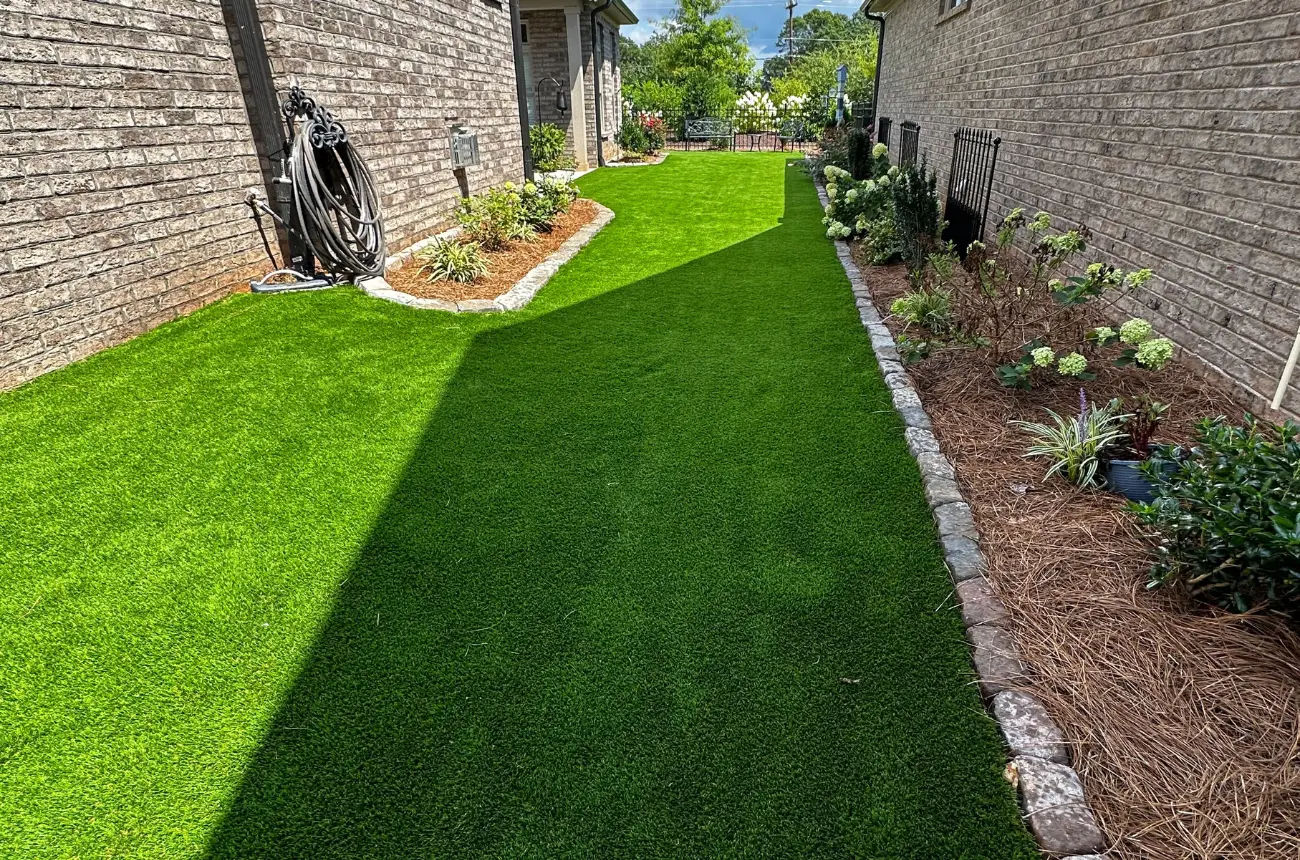Artificial Grass vs. Natural Grass: Which Is Best for Your Lawn in Upstate SC?

Considering artificial vs. natural grass in the Upstate? Discover cost, maintenance, and durability differences to make the right choice.
Keeping a beautiful lawn in Upstate South Carolina is no small task. Hot summers, unpredictable rain, and high humidity can make natural grass tough to manage. Many homeowners find themselves spending countless hours mowing, watering, and fertilizing—only to end up with patchy or brown lawns. That’s why more people are asking, “Is artificial grass better than natural grass for my yard?”
The truth is, both options have pros and cons. But for many families in Greenville, Spartanburg, and Anderson, artificial grass installed by Sepko Synthetic Solutions is proving to be the smarter choice. Let’s compare.
The Look and Feel
Natural grass: There’s no denying the traditional appeal of a real lawn. When it’s well-kept, it’s soft, lush, and visually appealing. But the challenge is keeping it that way year-round.
Artificial grass: Today’s turf looks more realistic than ever, with natural color tones, varying blade heights, and built-in thatch that mimics real grass. Many Greenville homeowners say visitors can’t even tell the difference unless they touch it.
Maintenance and Upkeep
Natural grass: Be prepared to mow weekly, apply fertilizers, control weeds, and water heavily during dry months. That maintenance quickly adds up in both time and money.
Artificial grass: With turf, upkeep is minimal. A quick rinse to remove dust and an occasional brushing are usually all it takes. No mowing. No watering. No chemicals.
Water Usage and Environmental Impact
Natural grass: Lawns in the Upstate consume thousands of gallons of water each summer. Add in fertilizers and pesticides, and the environmental footprint grows.
Artificial grass: Turf eliminates the need for watering entirely and reduces chemical use. For eco-conscious families, the savings in water and the reduction in lawn treatments are major benefits.
Durability and Weather Performance
Natural grass: Summer droughts, heavy rains, and shade all take a toll. Even the best-maintained lawns often have bare spots, mud, or browning patches.
Artificial grass: Sepko installs turf designed for South Carolina weather. It resists fading in the sun, drains quickly after rain, and stands up to heavy use from kids and pets.
Cost Considerations
Natural grass: Sod is cheaper upfront, but the ongoing costs—water, fertilizers, mowing equipment, and labor—add up quickly.
Artificial grass: While turf installation costs more at the start, most homeowners recoup the investment within a few years through lower bills and reduced upkeep. Plus, many report added curb appeal and property value.
When Natural Grass Still Works
Some homeowners still prefer natural grass, especially those who enjoy gardening or want the feel of real blades underfoot. If you’re willing to put in the work and don’t mind higher costs, natural grass can be rewarding.
Why More Upstate Families Choose Turf
For busy families, retirees, and pet owners, artificial grass has become the clear winner:
- Always green, regardless of season.
- Saves time and money on upkeep.
- Safe for kids and pets.
- Designed to last 10–15 years with minimal maintenance.
Make the Switch with Sepko
If you’re deciding between artificial and natural grass in the Upstate, Sepko Synthetic Solutions can help you weigh the options. With local expertise, premium turf products, and professional installation, we deliver lawns that look stunning and stay practical for years.
Contact us today to schedule your free consultation and discover why more homeowners are making the switch to artificial grass.
